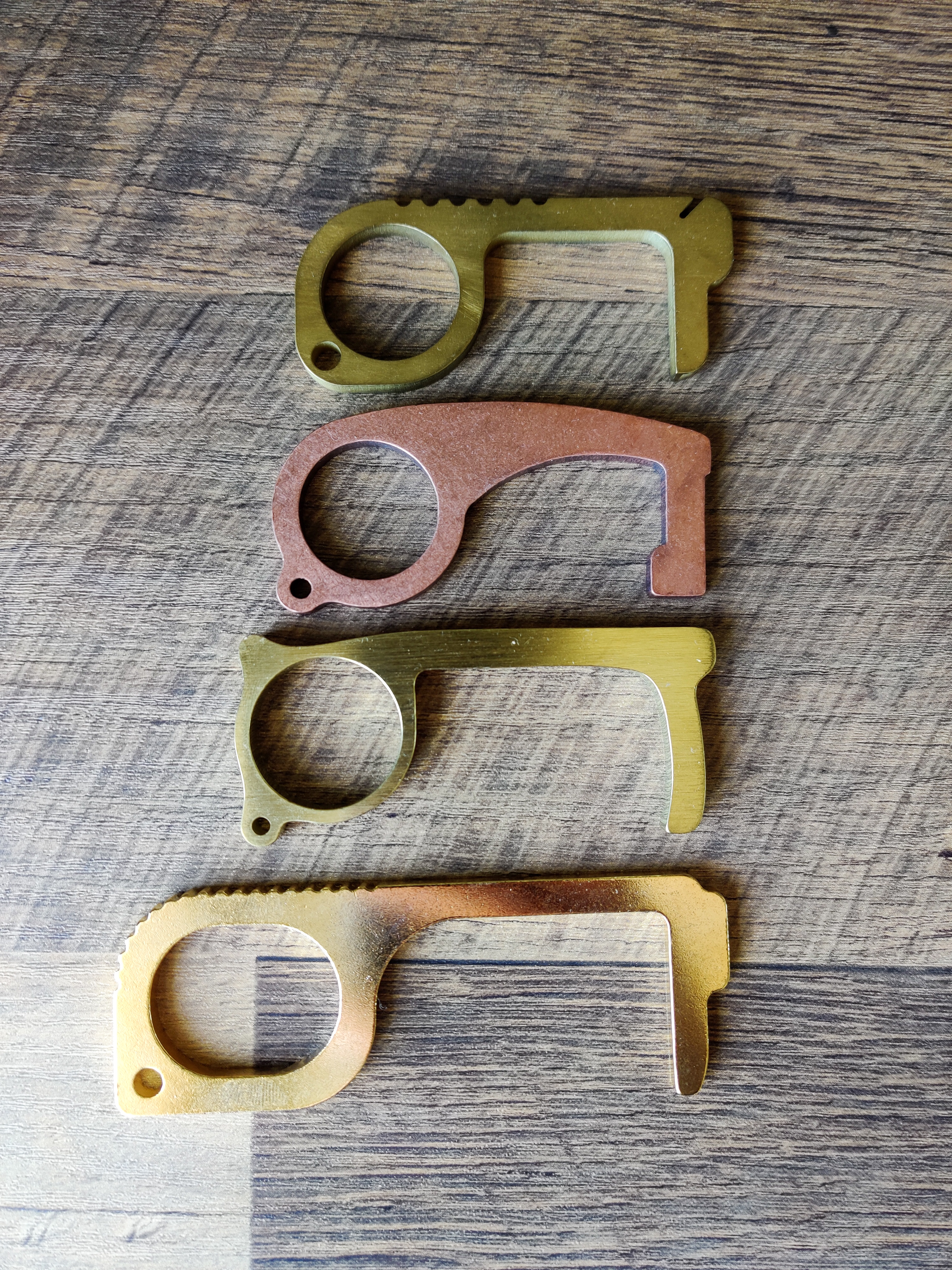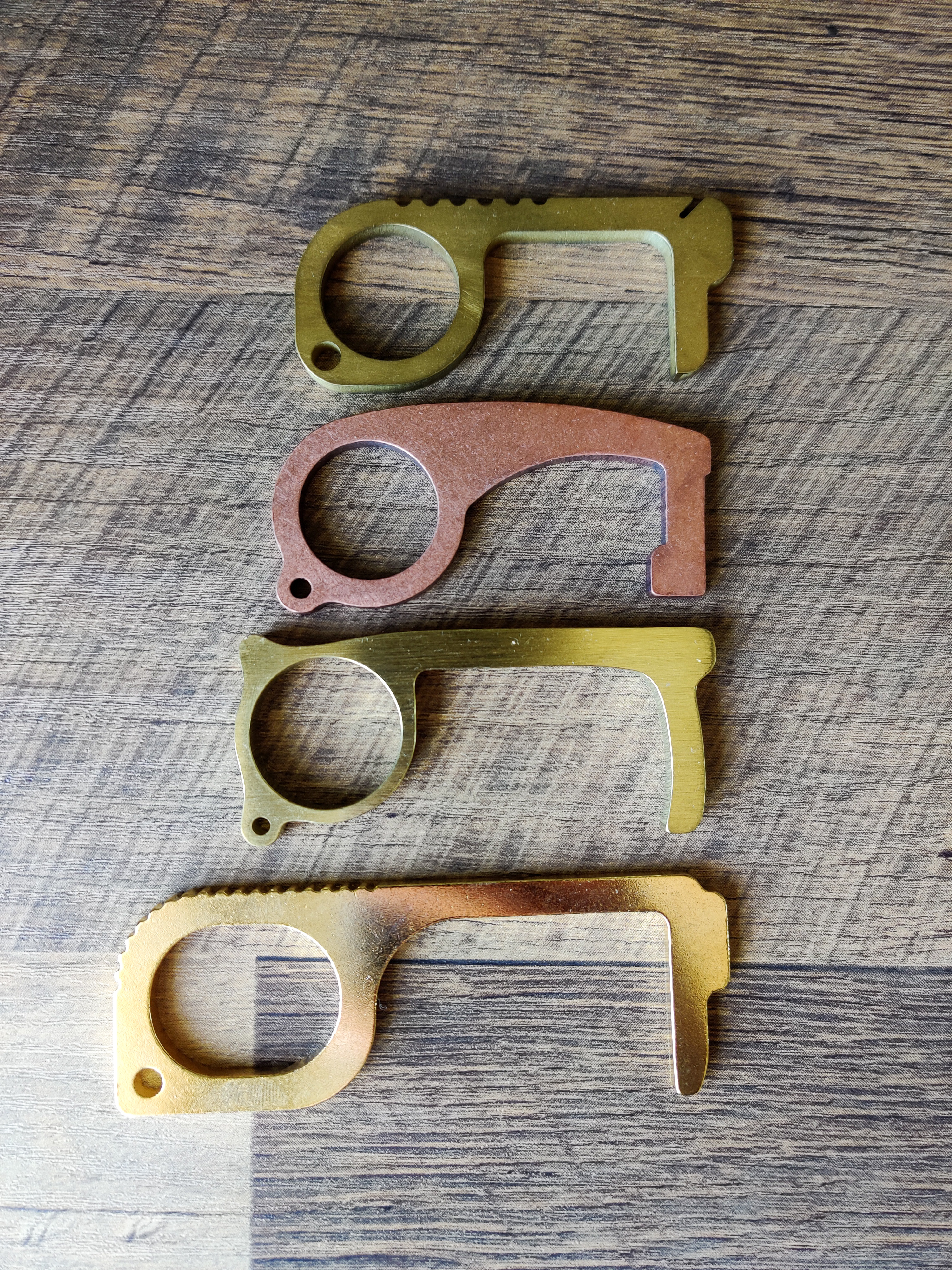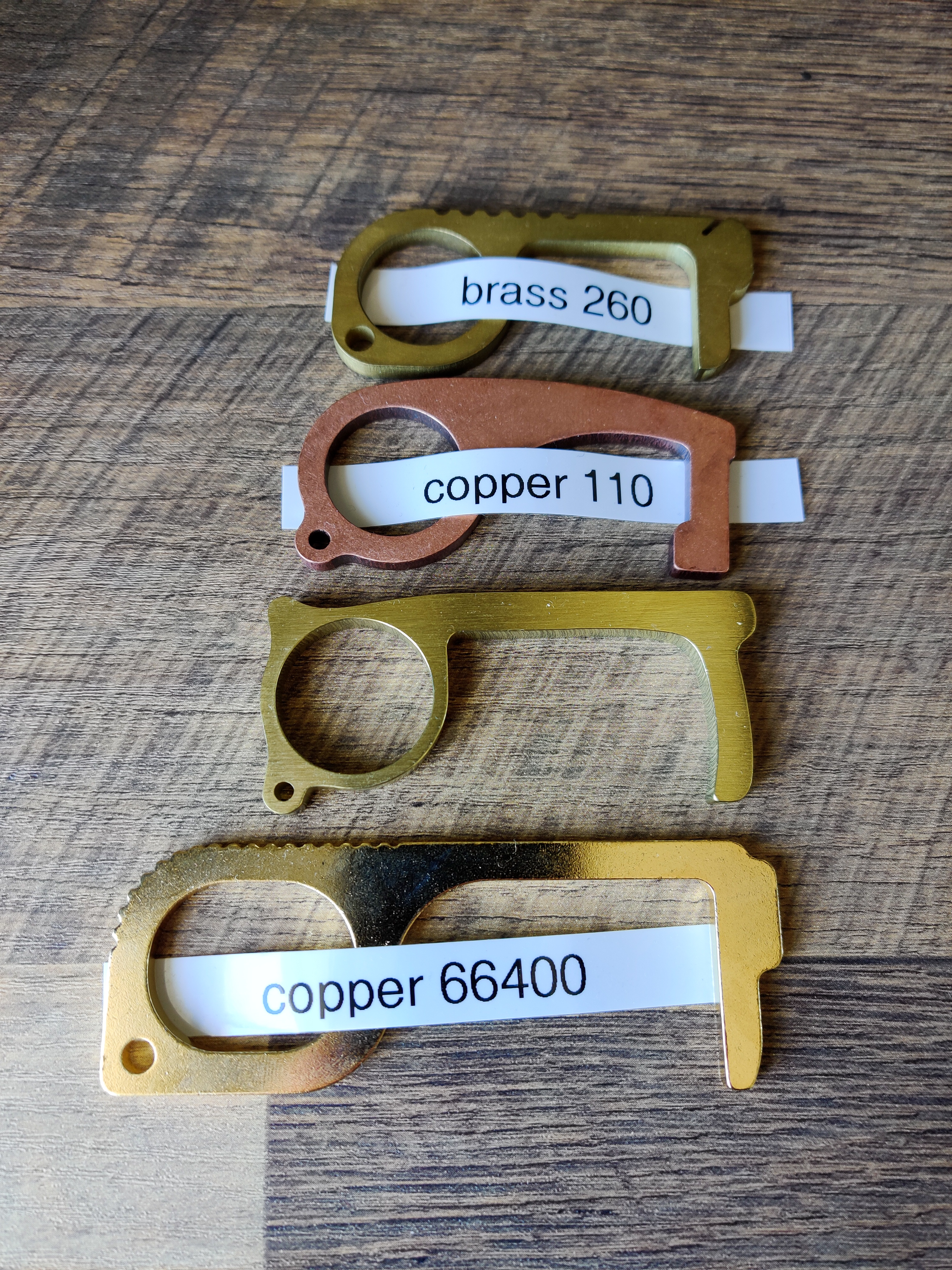Brass Hygiene Keys, Part Two

When COVID-19 lockdowns started, I noticed a bunch of brass hygiene keys appearing on kickstarter, tactical sites, ebay, amazon, ads, etc. Two months later, I've bought a few. I'm interested in the usability, composition, and utility.

Composition
The first thing I attempted to figure out on each key is what is the composition of the metal. The old way to identify the metal is to do a visual inspection and compare your results to known descriptions. The better way is to hire a lab to chemically test a chip from each of them. After talking a few labs, none would do tests on such a small batch. The third idea is to ask each seller/manufacturer of the keys what metal they used as their stock. Assuming the maker knows their product, I used that as comparison to my observations. My observations are terrible. Here are the answers I received from each maker.

The one missing a label is the ViraKey. They told me it was "copper, brass, bronze." I visually identified it as Brass 260, aka Cartridge Brass.
Technically, they all have copper. Copper's electrical conductivity properties enable these keys to work with touchscreens. Now that I had names for each metal used, the Copper Development Association has a nice Copper Alloy Search function.
| Maker Name | Common Name | CDA Designation |
| Brass 260 | Cartridge Brass | C26000 |
| Copper 110 | Electrolytic Tough Pitch | C11000 |
| Copper 66400 | Aluminum Bronze | C66400 |
Usability
How usable are the different designs? I used them with a few categories in mind: electrical conductivity, grip, and feel of force. The electrical conductivity is really to answer how well it works with touch screens.
They all work well with touch screens, sometimes better than my finger. It takes some practice to sign your name with a key, and not to push to hard-to avoid scratching the screen.
They all have plenty of grip for all uses. All of them have rounded edges so they don't hurt as you use them.
Opening doors is where the different designs come into play. Unless you open doors normally with one finger, the force/pressure is far stronger than you expect. The ViraKey (3rd down from the top) feels the best. The small scoop at the top where your thumb rests helps far more than one would think. It lets you distribute the pulling force just enough to notice. The bottom key with the ridges on top is the second less forceful pull. Same with the top key.
I think making the finger hole wider at the back would reduce the pressure for doors. Overall, they all work great for their intended purposes.